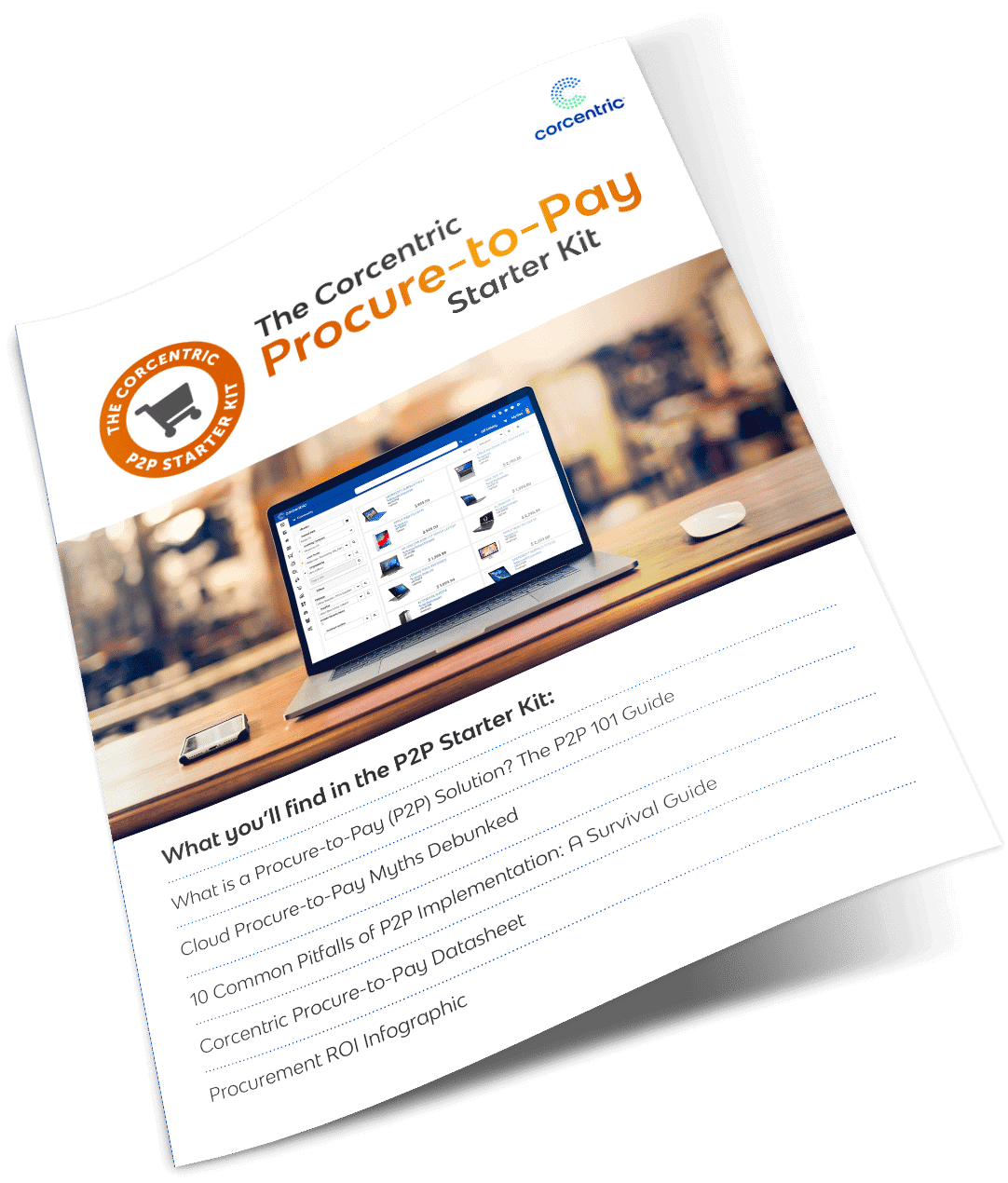Procure-to-pay: the benefits of P2P automation
Home - Procure-to-pay: the benefits of P2P automation
Corcentric

Successful companies understand that, in today’s global and increasingly competitive economy, it is essential to take a holistic approach to all facets of business.
This is creating a change in the way tasks are performed, especially within procurement and finance functions, where processes are repetitive, tedious, and time-consuming.
What does procure-to-pay automation look like?
Here’s where automating your P2P process can be valuable.
-
- Purchase requisitions – an automated requisitioning process can save time tracking down the right managers and waiting for approval. Automation can help requisitions go straight to the right source for quick and easy authorization.
- Purchase orders – automating the purchasing process eliminates a multitude of manual processes like typing and sending purchase orders, along with purchase order approvals.
- Process invoicing – invoicing includes sending, receiving, matching, and approving invoices for goods and services received. Invoices have to undergo three-way matching to ensure the purchase order, the invoice, and the order receipt are all correct. Automating the invoice process means that invoice information is entered automatically, reducing the chance the process is slowed down due to human error.
- Payment – in many cases, the automation software can be integrated into an existing ERP system, so payments can be automatically pushed out to vendors once an invoice is approves.
What are the benefits of procure-to-pay process automation?
Automating your procure-to-pay processes provides a wide range of benefits for procurement and accounts payable. Below are just some samples of improvements your company will realize. For more detailed information, see the CFOs Ultimate Benchmarking Guide to the P2P Process.
-
- Streamline procurement process workflows – Procurement software provides connectivity throughout the organization so requisitions are requested and approved faster, appropriate suppliers are selected based on data, and POs are produced and sent to the suppliers; all electronically and all easily trackable.
- Reduce invoice processing costs by up to 80% – going paperless leads to both time and cost savings, enabling companies to use employees for more strategic initiatives rather than for repetitive tasks better accomplished by automation.
- Get 100% visibility – a P2P solution provides visibility throughout the supply chain, giving both buyers and suppliers the ability to view invoice approval status in real time.
- Realize better management of exceptions – with most invoices processing straight through, exceptions can get the attention they deserve and get resolved faster.
- Improve supplier relationships – by utilizing the supplier portal, suppliers can know when they will receive payment and that gives them the information necessary for better decision making. You may also start receiving perks like early payment discounts.
- Leverage negotiating power – when suppliers have confidence in their payment status they may be willing to offer terms that are more advantageous to buyers while still ensuring that suppliers have the revenues they need to grow their business.
- Capture data for better decision making – robust P2P solutions offer robust on-demand reporting capabilities. By using real-time and historical data provided, companies can gain greater control over cash flow and working capital.

Now that you know the 7 reasons why, here’s the how
Corcentric’s P2P Automation solution
Companies that have not implemented a digitized automated system are subject to human errors that often accompany manual processing, delayed payments due to disputes, and a complete lack of visibility into the real time status of invoices.
Corcentric offers P2P solutions from Invoice and Payments to Contract Management. Contact us and get started today.














